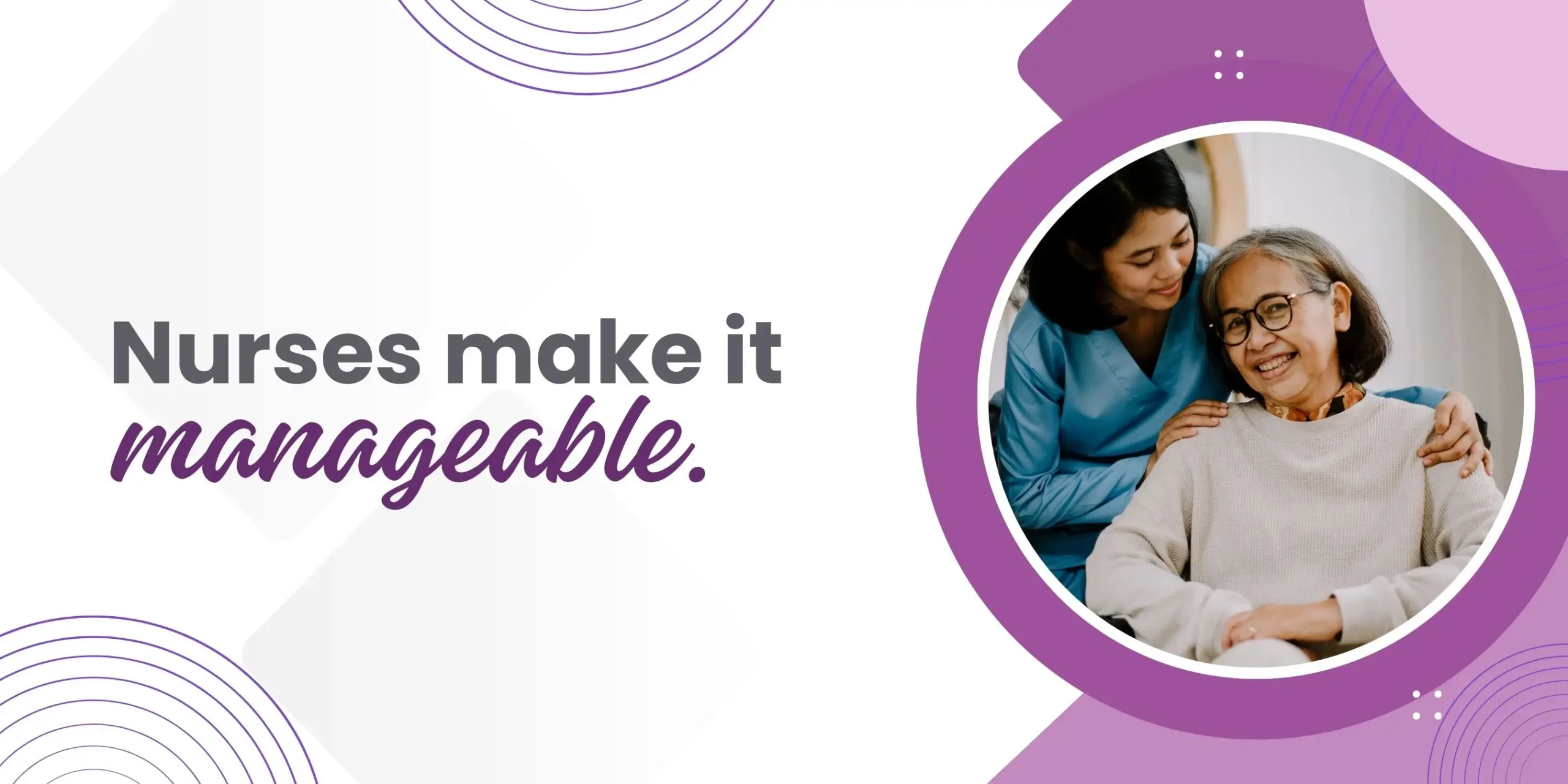 It is not simple to live with Cerebral Palsy (CP),especially when it comes with other medical illnesses like epilepsy. The most difficult thing for most families, maybe, is to cope with irregular seizures together with care, mobility, and communication needs. It is as if one has to juggle too many things at once. At times such as these, a clinical nurse is not just a healthcare worker but a comforting presence who infuses competence, understanding, and true concern into the daily routine. Clinical nurses are an important aspect of assisting families in adapting to the conflicting challenges of Cerebral Palsy and epilepsy.
It is not simple to live with Cerebral Palsy (CP),especially when it comes with other medical illnesses like epilepsy. The most difficult thing for most families, maybe, is to cope with irregular seizures together with care, mobility, and communication needs. It is as if one has to juggle too many things at once. At times such as these, a clinical nurse is not just a healthcare worker but a comforting presence who infuses competence, understanding, and true concern into the daily routine. Clinical nurses are an important aspect of assisting families in adapting to the conflicting challenges of Cerebral Palsy and epilepsy.
Through the combination of health experience and direct instruction, clinical nurses facilitate the creation of a less frightening and safer environment to be in for carers and patients. This article reflects on the role played by clinical nurses in seizure control, quality of life, and eliminating some of the psychological load that is borne by those living their lives co-existing with epilepsy and CP.
Understanding the Connection between Cerebral Palsy and Epilepsy
Cerebral Palsy is a group of neurological disorders that affect movement, posture, and coordination. It is caused by damage to the developing brain, most often before or at birth. Most patients with CP develop epilepsy as a result of the same brain abnormalities that caused their CP. Furthermore, studies have shown that nearly half of children with CP experience seizures.
Epilepsy in CP patients can range from rare attacks to long-standing, severe seizures. They can be preceded by illness, stress, fatigue, or they can occur suddenly without warning. The manner of seizures and the degree of severity can widely fluctuate, thus professional help is required.
Why Clinical Nurses Are Essential in Managing Epilepsy with CP
When you have a condition like Cerebral Palsy with secondary epilepsy, a one-size-fits-all care plan just isn’t going to cut it. None is identical. Clinical nurses already understand that. Their work is more than medication. It’s about rolling up sleeves, being responsive, and being proactive in health.
Here’s how a clinical nurse can make a difference:
1. Monitoring and Managing Seizures
Seizure activity monitoring is one of the clinical nurse’s biggest jobs. They help monitor seizure frequency, duration, and possible reasons for seizures. Nurses can provide important feedback to physicians by closely noticing what physicians employ to alter treatment plans. Nurses also teach families how to react during a seizure so that the response is safe, peaceful, and adequate.
They can design seizure care plans, teaching carers how to give rescue medication, how to position the patient safely, and when to contact emergency services. This assistance renders families less anxious and assured.
2. Medication Management and Side Effect Monitoring
Antiepileptic drugs are the cornerstone of seizure management, but they also have side effects and complications. A clinical nurse ensures the correct drug is being given on a daily basis and in the correct way, and looks for signs that it is not effective. Side effects such as drowsiness, mood swings, or indigestion may not manifest themselves right away, but a good nurse will pick up on these sooner and take action accordingly.
They also coordinate with GPs and neurologists to help with optimising doses or summaries where a treatment is not effective.
3. Enabling Nutrition and Hydration
Seizure medication, mobility restrictions, and difficulties with eating can all hinder an individual’s diet. In an individual with Cerebral Palsy, staying well-hydrated and well-nourished can be required in helping to reduce seizure provokers and promote overall health.
Clinical nurses carefully track nutrition needs. Regardless of whether through meal planning, PEG feeding support, or supplement scheduling, they work towards creating a well-balanced stability that encourages energy levels, immune function, and mental function.
4. Educating Families and Carers
Families are typically the first to react during a seizure. A clinical nurse sees to it that they are trained, prepared, and comfortable doing this task. This includes educating them on safe positioning, helping identify different types of seizures, and counseling for emotional reactions in an emergency condition.
Apart from the management of seizures, they also teach regarding linked health problems such as sleep hygiene, fever management, and signs of complications. This creates a safer and more predictable care environment.
 5. Allied Health and Community Service Coordination
5. Allied Health and Community Service Coordination
Caring for an individual with Cerebral Palsy and epilepsy can involve the services of an enormous range of professionals. The interface is the clinical nurse. They consult with physiotherapists, occupational therapists, neurologists, dietitians, and social workers to offer a holistic package.
This partnership model reduces the risk of forgotten information or duplicated care and increases the emphasis on the bigger picture of the patient’s wellbeing. It also removes some of the administration strain that can cause carers to become overwhelmed when trying to sort out appointments and care plans.
6. Emotional and Mental Health Support
Epilepsy is costly emotionally when seizures become recurrent without cause or rhyme. Anxiety, fear, and stress not only occur in the patients but also their families. Clinical nurses are taught to provide supportive, client-owned mental health care. They provide reassurance, comfort, and insight whenever the journey becomes suffocating.
They also assess for depression and burnout signs in the caregivers and refer for counseling or mental health as needed.
7. Formulating Long-Term Plans
A person with Cerebral Palsy develops over time. It is not suitable for an adolescent, nor will it be suitable for an adult. Clinical nurses help formulate long-term plans of care that change with the patient. Transition milestones, alternatives for future treatment, and adapting seizure management methods as the person becomes more independent are part of the plans.
By taking initiative, clinical nurses allow families to be more in control of their future, rather than constantly reacting to things as they occur.
When Should a Clinical Nurse Be Involved?
The ideal time to involve a clinical nurse is when epilepsy becomes a normal part of life with CP. No matter the frequency and severity of seizures, professional help makes a measurable difference in safety and well-being.
Even if the patient is already under the care of a neurologist or home care, having a clinical nurse as an addition is more active care that is more personal, more continuous, and more reactive.
Conclusion
Treating epilepsy in a person with Cerebral Palsy is not merely an issue of controlling seizures. It’s an issue of bringing calm amid the storm, providing families with something they can utilise, and enabling every individual to live more wholeheartedly and confidently.
At Ixora Care our clinical nurses are part of the team of compassionate, seasoned professionals who really understand how families function. With warm, person-focused care that goes beyond lists and charts, Ixora Care brings peace, stability, and a sense of partnership to every level of care.
To learn more or talk to one of our experienced clinical nurses, call Ixora Care today. Empowered care starts with having the right support team beside you.

